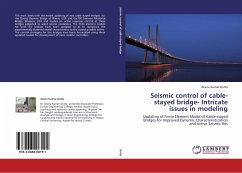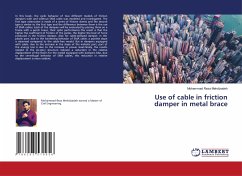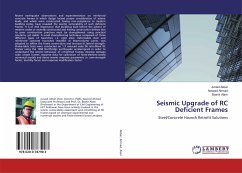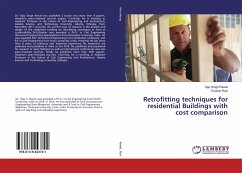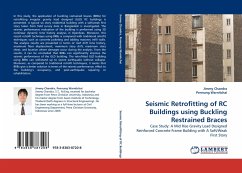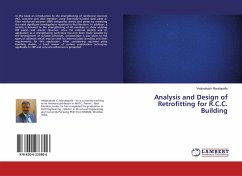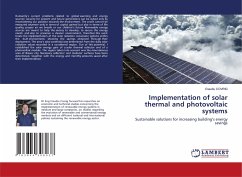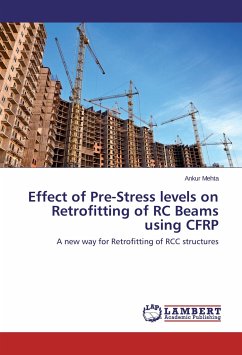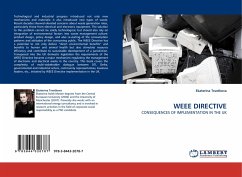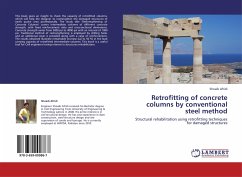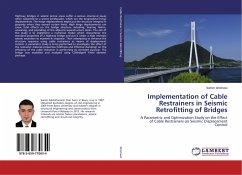
Implementation of Cable Restrainers in Seismic Retrofitting of Bridges
A Parametric and Optimization Study on the Effect of Cable Restrainers on Seismic Displacement Control
Versandkostenfrei!
Versandfertig in 6-10 Tagen
41,99 €
inkl. MwSt.

PAYBACK Punkte
21 °P sammeln!
Highway bridges in seismic prone areas suffer a serious structural issues when subjected to a severe earthquake, which are the longitudinal hinge displacements. The hinge displacements might put the structure integrity in jeopardy when they exceed certain limits. High hinge displacements can cause fatal effects on the bridge structure including; bearing failure, unseating, and pounding of the adjacent superstructure decks. The aim of this study is to implement a numerical model which characterize the standard properties of a highway bridge and put it under a high intensity seismic excitation t...
Highway bridges in seismic prone areas suffer a serious structural issues when subjected to a severe earthquake, which are the longitudinal hinge displacements. The hinge displacements might put the structure integrity in jeopardy when they exceed certain limits. High hinge displacements can cause fatal effects on the bridge structure including; bearing failure, unseating, and pounding of the adjacent superstructure decks. The aim of this study is to implement a numerical model which characterize the standard properties of a highway bridge and put it under a high intensity seismic excitation to examine its response. Then attempting to enhance the structure response using cable restrainers as means of displacement control. A parametric study is to be performed to investigate the effect of the restrainer material properties (Stiffness and Effective damping) on the efficiency of the cable restrainer in performing its intended purpose. The bridge was modelled and analysed using CSIBridge® finite element package.



